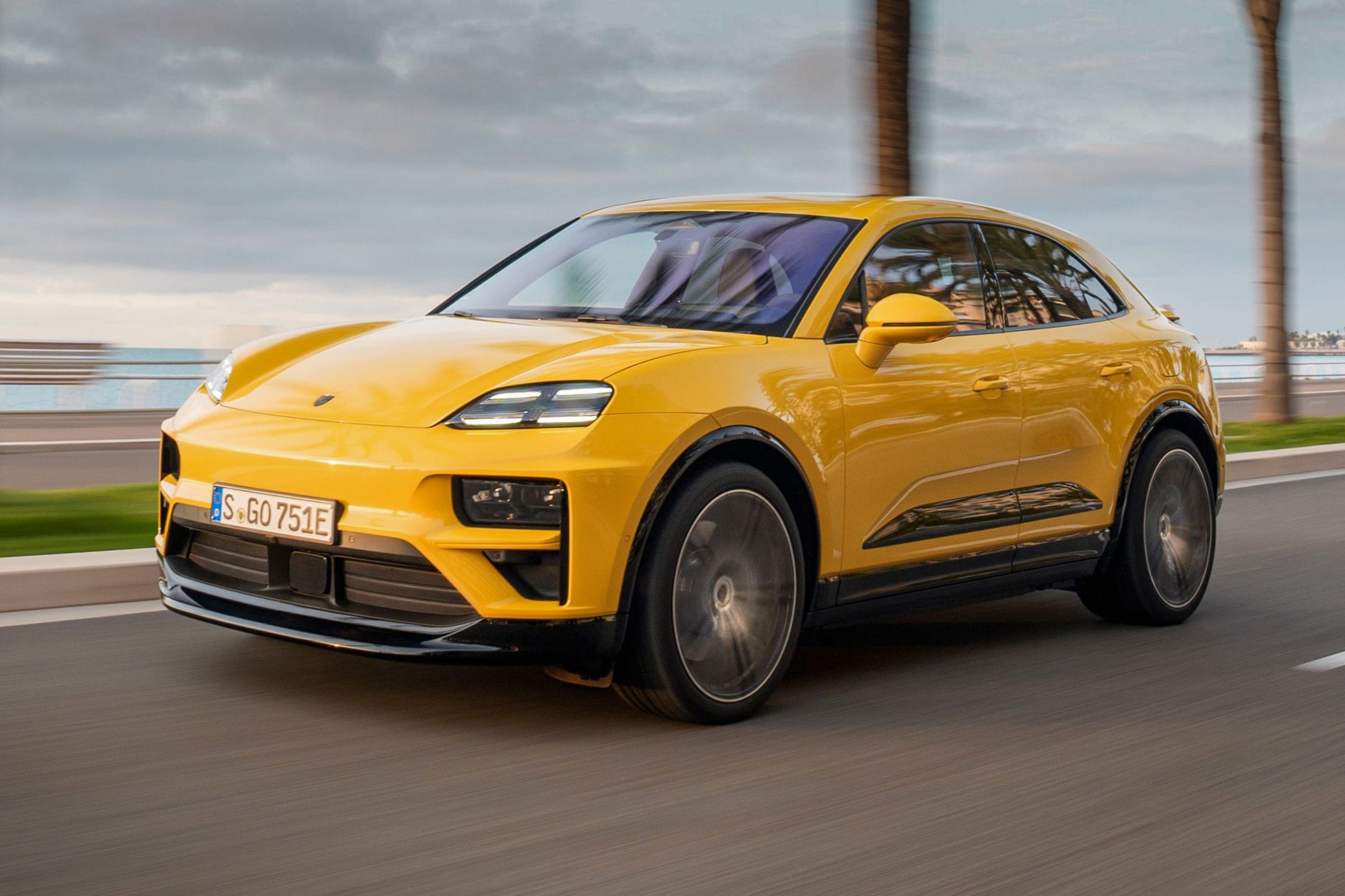Porsche Macan Electric Review 2025: Price, specs & boot space
Written by John Howell
Quick overview
Pros
- Amazing performance and agile handling
- Super-fast charging and great official range
- Plush ride with air suspension
Cons
- Lumpy ride without the air suspension
- Not as spacious for passengers as some rivals
- Expensive to buy
Overall verdict on the Porsche Macan Electric
"The Porsche Macan Electric is the first all-new Macan since the model arrived in 2014. And despite being electric, the latest Macan maintains many of the old model’s key attributes. It’s still one of the best-handling SUVs you can buy, it’s still incredibly quick, and still looks and feels premium inside and out. It’s also got a great electric range, too, but it’s not cheap."
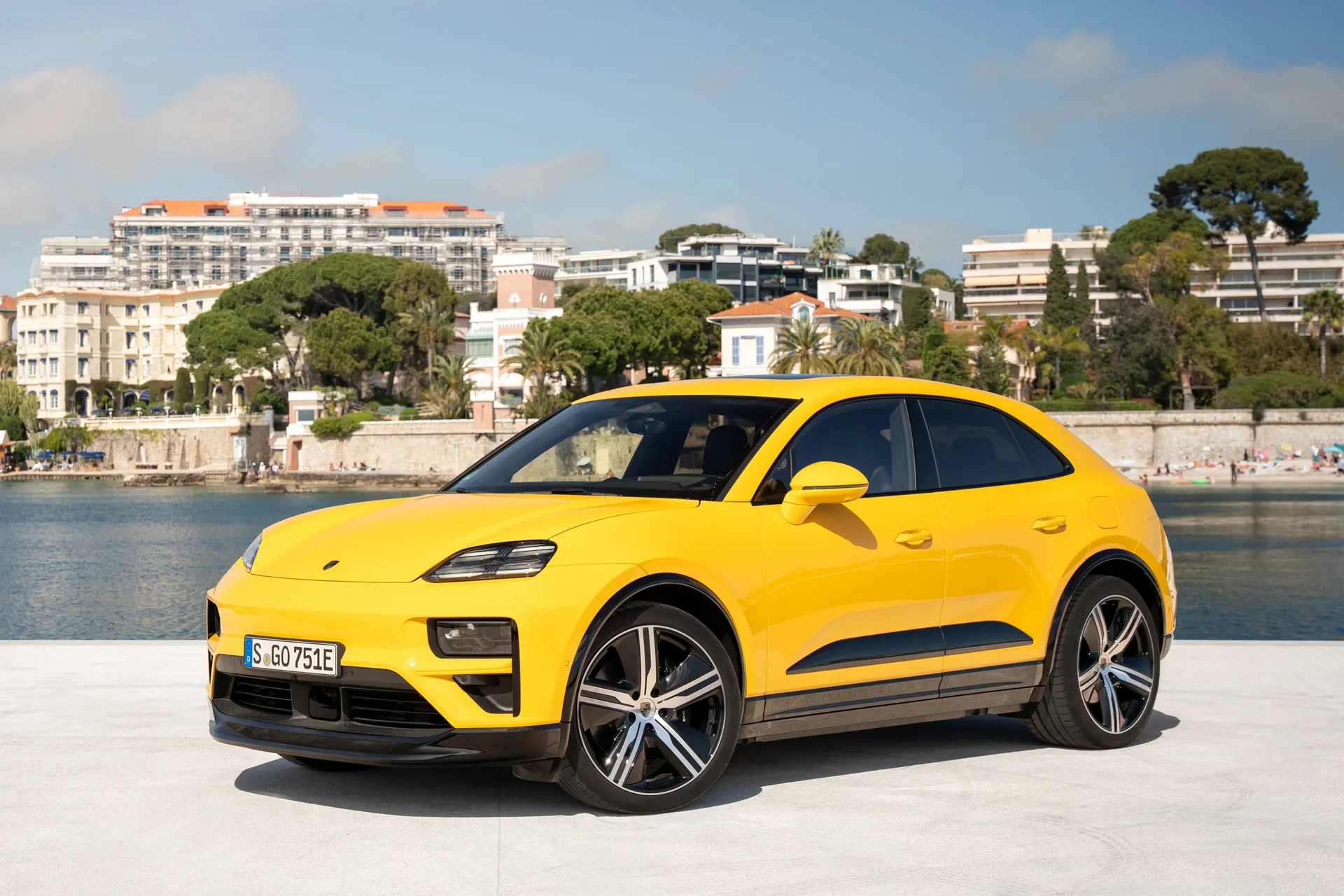
The Porsche Macan Electric isn’t the first electric Porsche. You’re probably aware of that, though. After all, just think about the number of Taycans out there; Porsche’s sold over 100,000 worldwide since it was launched in 2019, which is why you see so many whooshing by silently on British roads. But the Porsche Macan is the first existing model in Porsche’s range to be electrified, which means it’s gotta be good. Why? Well, think about it: 100,000 Tayans is a lot, but there are more than 800,000 Porsche Macans in the world, and with the popularity of SUVs undimmed, the Macan Electric has to be good if Porsche wants to keep its sales buoyant. Mind you, Porsche could be accused of sitting on the fence. For the time being it’s still building the original, petrol-powered Porsche Macan alongside the EV version.
The original Macan arrived in 2014 but, let’s be clear: other than arguably its looks, the electric model has nothing in common with the petrol-powered version. In fact, it’s quite different to the Taycan, as well. The Porsche Macan Electric uses a completely new platform called PPE – yes, we know that abbreviation was bandied about a lot during the pandemic but this has nothing to do with facemasks or latex gloves. In this context, it stands for Premium Platform Electric. It was developed jointly with Audi and it’s used in the current Audi Q6 e-tron as well. So that’s the car the Macan Electric is most closely related to, and it’s also one of its chief rivals.
It has many other rivals as well. You’d have to include the current petrol Macan, bearing in mind Porsche’s left it on sale, and one reason to opt for that over the electric version is cost. It’s a lot cheaper to buy. The petrol Macan starts from around £55,000 and rises up to £75,000 for the top GTS model. Meanwhile, the Porsche Macan Electric range kicks off with the rear-wheel drive (RWD) Macan that’s £68,500. The top-of-the-range, all-wheel-drive (AWD) Turbo isn’t far off £100,000, and most, once people have added a few extras, will breach that ceiling easily.
How does the price compare with other electric SUVs? The Tesla Model Y is a lot cheaper; even the most powerful Performance version is less than £60,000. The closely related Audi Q6 e-tron starts at just over £60,000 and peaks at around £70,000, although the Macan Electric is generally more powerful and quicker. Even the basic RWD model has 360hp and can hit 0-62mph in 5.7 seconds. The stats for the top Turbo model are mindboggling: 648PS and 62mph from rest in 3.3 seconds.
It’s not just quick in straight-line performance, mind. All Porsche Macan Electric come with a 100kWh battery that charges at up to 270kW, which is very fast providing you find a charger capable of delivering that much energy. It means a 10-80% boost can be done in as little as 21 minutes. If you’re charging at home from a wall box it’ll take around 12 hours to go from flat to full. And that will give you plenty of range, too. The entry-level Macan is the most efficient and will officially deliver up to 399 miles on a single charge. The least efficient is the Turbo, but officially even that’ll manage up to 367 miles without stopping.
The Macan Electric is slightly longer and wider than the petrol model so it’s a little roomier inside. That said, it’s not exactly limo-like in the rear and other electric SUVs offer more luggage space, too. It does have a small boot under the bonnet, though, but even so you’ll be able to cram a lot more luggage into a Tesla Model Y or Lotus Eletre. On the plus side, the interior quality is much higher than the Tesla’s. And it’s very typically a Porsche inside, so it’ll feel familiar to anyone who’s got a petrol Macan, a Taycan or even a modern 911.
The Porsche Macan Electric is too new to appear in great numbers on the used market, but if you’re after a used Porsche you’ll find plenty of them on heycar. That includes the original Macan and numerous used Taycans as well.
heycar has 1000s of used cars for sale, including a wide range of Porsche Macans for sale.
Is the Porsche Macan Electric right for you?
That depends. If you’re still sceptical about electric cars in general, or find that they’re outside your budget, then perhaps a petrol-powered Macan would suit you better. Also, if you need a really roomy SUV, or one with seven seats, you might find the Macan Electric doesn’t fit your needs.
Who would suit a new Macan Electric, then? Well, definitely anyone who wants an EV with a long range, because the Porsche Macan Electric is officially capable of nearly 400 miles on a single charge. That means it has the legs to go farther than the Tesla Model Y Long Range and many other rivals, too.
As good as that is, it’s perhaps not the Macan’s main selling point. This is primarily a car for buyers looking for a sporty SUV that’s great to drive. On that score, it fits the bill perfectly – it’s definitely one of the best-handling electric cars on the market. It’s also a Porsche, which means you’re buying into a premium brand. The Macan Electric lives up to that billing by feeling very premium inside.
What’s the best Porsche Macan Electric model/engine to choose?
Arguably, the basic RWD Porsche Macan Electric is good enough for most people’s needs – after all, with 365PS it can hit 0-62mph in 5.7 seconds. It also has the best official range at 399 miles. We haven’t driven that version yet, though, so the one we’d recommend – for now at least – is Macan 4.
With 414PS the 4 is quicker still, dropping the 0-62mph time to just 5.2 seconds, but that’s not its only selling point. You also get a second motor driving the front wheels, making it AWD. That improves traction, making the Macan 4 punchier out of corners but also better able to deal with trickier conditions in general. Even though it has double the motors, it’s only just behind the RWD model’s official combined range – the Macan 4 can manage up to 380 miles on a full charge according to WLTP figures.
For those focused on speed, the Macan 4S really cranks things up with 516hp gifting it 0-62mph in 4.1 seconds. But the range is capped by the mighty Turbo and the stats for that are bewildering. Its peak power output is 648PS, which means 62mph from rest in just 3.3 seconds. It’ll also keep on accelerating to a claimed 162mph.
What other cars are similar to the Porsche Macan Electric?
On the one hand, you’d have to conclude that the petrol-powered Macan is the most similar car to the Macan Electric. After all, it has the same name and it’s sold in the same showrooms. But that aside, the most similar car mechanically is the Audi Q6 e-tron – both it and the Macan were developed in tandem. Like the Macan, it has an impressive range, charges quickly and it’s comfortable and quiet. It’s also cheaper, but not as quick nor as fun to drive.
The Tesla Model Y Performance delivers similar straight-line acceleration to the Macan Turbo, but for a lot less cash. It also has more luggage space and gives full access to Tesla’s excellent Supercharger network. However, the interior is nowhere near as special and it doesn’t ride as comfortably or handle with the same aplomb as the Macan.
You might also want to consider the BMW iX3 and Mercedes-Benz EQE SUV if you’re after an electric SUV with a premium badge, or the Kia EV6 – just because it’s a great all-rounder.
Comfort and design: Porsche Macan Electric interior
"Inside, the Porsche Macan Electric feels like a mix of the old Macan and Taycan. There’s a simplicity to the overall design that makes it clean and functional, but it’s also very nicely finished, so it feels very obviously premium. Importantly, the usability is great because there are some physical controls and the infotainment systems are generally intuitive."
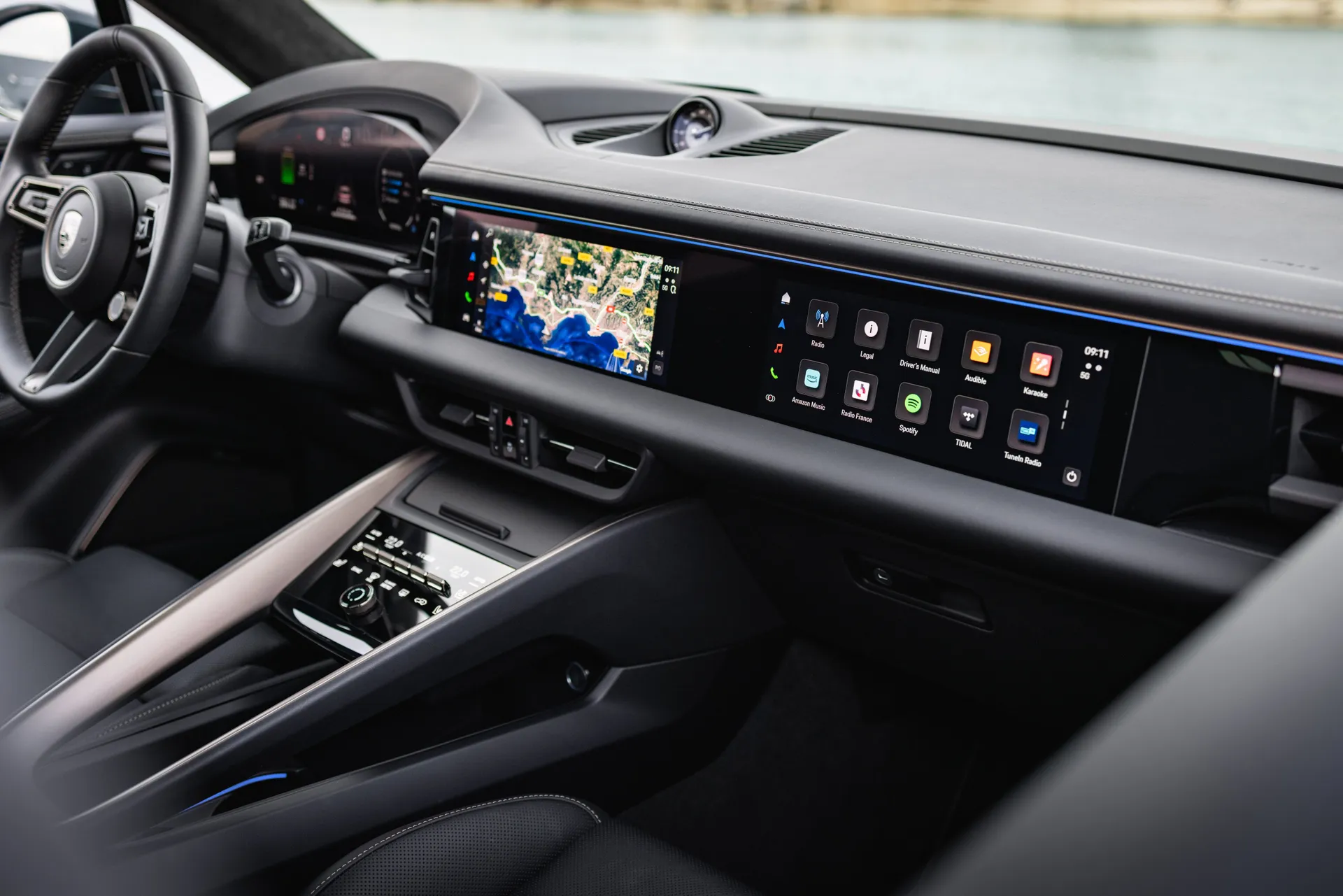
As we’ve said already, this may be an all-new model but, in typical Porsche fashion, its style is evolutionary rather than revolutionary. That’s no bad thing: inside or out, the clean and classy look works well. You should feel at home in the Macan Electric if you’re coming from a petrol-powered Macan – albeit there are far fewer buttons – and the same is true if you’re trading in a Taycan. Indeed, the shroudless digital instrument panel is pretty much identical to the one you get in the Taycan. You can see it easily through the steering wheel and, thanks to the clear and customisable graphics, it’s a useful source of information. The optional augmented reality head-up display is a bit distracting, though. It projects an image that appears to stretch 10 metres in front of the car, which is fine. But the animated arrows linked to the navigation system that direct you are a bit over the top.
For usability, we reckon the Porsche Macan Electric is an improvement over the Taycan. The Taycan comes with three screens, including one on the central console for adjusting the climate controls. In the Macan that’s replaced by a row of physical buttons for adjusting often-used features, like cabin temperature. We like these because they’re much easier to operate while you’re driving along. Below are some haptic buttons, which aren’t quite as easy to use, but they’re for less commonly used functions.
A key difference between this and a Taycan is the driving position. The Macan is obviously an SUV, so you sit much higher from the road than you do in the low-slung Taycan. It feels like you’re sitting a lot higher up than you would in a Tesla Model Y, too. So if you’re after an SUV for the lofty driving position it’s a winner.
That said, while you sit relatively high from the road, you do feel quite cocooned by the high and deep dashboard. It makes it feel like you’re peering out from a fair way back and that, to an extent, hurts visibility. From the driver’s perspective, it makes the Macan feel bigger than it is. While that’s an illusion, you feel the need to give kerbs a wide birth when you’re threading it down narrow winding roads. The view out of the slim rear window is quite restricted, too. The good news is front and rear parking sensors and a rear-view camera are standard.
Also standard are Comfort seats that come with eight-way electric adjustment. They offer good support on long trips as well as through corners. You can upgrade them to 14-way or even 18-way Adaptive Sports Seats – both options add a memory function and electric adjustment for the steering column. You can also upgrade to massaging seats if you fancy even more luxury.
Quality and finish
This is an area where the Porsche Macan Electric has most of its rivals licked. The interior feels very nicely finished with subtle ambient lighting and choice materials throughout. Those include gloss black trims on the dashboard and lots of leather. Leather is standard for the seats but you can pay extra to get the centre console, dashboard and door trims wrapped in leather, too.
Even the bits that aren’t wrapped in leather generally look classy and are soft to the touch. Meanwhile, the Audi Q6 e-tron has more harder plastics inside and doesn’t feel quite as special. The Macan Electric’s interior feels solidly put together as well. The switches work smoothly, the various panels fit together well and nothing comes across as flimsy.
There’s plenty of scope to customise the interior. You can opt for two-tone leather with contrasting light and dark sections, change the seatbelt colour, add brushed aluminium or wood trim, change the roof lining and steering wheel trim to faux suede, and have the seats embossed with Porsche crests. And that’s before you get stuck into the ‘Exclusive Manufaktur’ options, which allow you to create something truly bespoke.
Infotainment: Touchscreen, USB, nav and stereo in the Porsche Macan Electric
The infotainment system is run from the 10.9-inch touch screen in the middle of the dashboard. The operating system is Android-based, which is good. It reacts promptly when you hit an icon and it’s not laggy when you scroll and zoom on the map. In general, the menu layout is easy to get your head around, too, especially once you’ve had a bit of time to get used to it.
You can add an optional 10.9-inch passenger screen as well. This allows the passenger to enter a navigation address or use third-party apps, like streaming services, to keep themselves entertained on a trip. In case you’re wondering, no, the driver cannot watch as well. The passenger screen appears blank unless you’re sitting directly in front of it.
Standard kit includes a 15-watt wireless charging pad, which is cooled to stop your phone from overheating. You also get Apple CarPlay and Android Auto so you can use your phone’s software rather than the car’s should you prefer. And the Macan comes with a 10-speaker, 150-watt stereo. You can upgrade that to either a 14-speaker, 710-watt BOSE surround sound system, or an even pricier Burmester system with – wait for it – 21 speakers and 1,470 watts.
Space and practicality: Porsche Macan Electric boot space
There’s plenty of space in the front seats – and not just in terms of head and legroom, which, for the record, are both more than adequate for anyone well over six-feet. It also feels wide up front, so you shouldn’t end up banging elbows with your passenger. Storage options include two-tier door pockets with space for a water bottle, a decent-sized glovebox, and a centre console featuring two cup holders, a lidded cubby, and storage under the front centre armrest.
Move to the rear seats and the space is okay but not amazing. Tall people will fit but they won’t have a lot of space if those in the front slide their seats far back. Headroom is fine in the two outer-rear seats unless the optional panoramic roof is fitted – if it is it’s quite tight for taller folk. It’s even worse in the middle seat because it’s positioned higher and it’s also narrow, so it’ll be a struggle to fit three large adults comfortably in the back. The Kia EV6 is roomier in the back, but if you’re after a premium electric SUV with more space, try the Audi Q8 e-tron or Jaguar I-Pace. If you need to fit a child seat in the Macan Electric it comes with standard ISOFIX mounts in the rear and you can add them to the front passenger seat as an option.
The boot is 540 litres, which compares well with the Audi Q6 e-tron and should be enough for a couple of suitcases or a pushchair. Again, the Q8 e-tron is slightly more generous for luggage space, while the Lotus Electra and Tesla Model Y have much more carrying capacity if you need it. The Macan has some underfloor storage, provided you don’t have the optional sound system – the gubbins for that fills the space. The underfloor space is handy for the charging cables, but you could put those in the handy 84-litre boot under the bonnet. If you need extra carrying capacity, then the rear seats fold 40:20:40. Because the boot floor is flush with the boot opening there’s no load lip to worry about, either.
Handling and ride quality: What is the Porsche Macan Electric like to drive?
"Whether it’s electric or combustion-powered, a Porsche Macan must handle well. Happily, the electric version does. It’s quick, especially the mighty Turbo model, and it feels quick-witted and confidence-inspiring in the corners, too. If you order a car with air suspension it’s also a pleasingly comfortable and refined car to cover big miles in. Its excellent range and quick charging potential should make it a stress-free car for long trips as well."
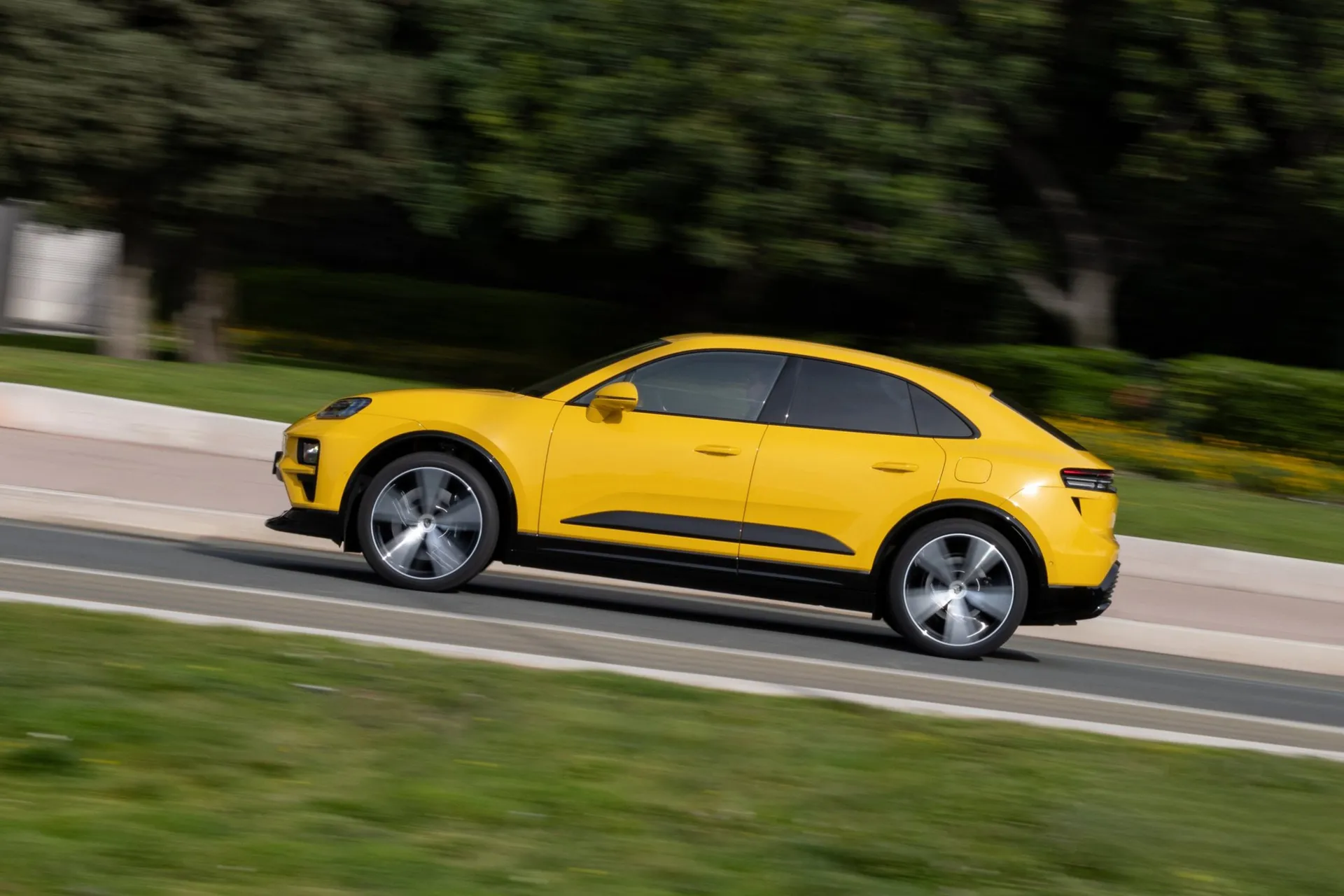
The Porsche Macan Electric is a chip off the old block when it comes to handling. If you enjoy driving a car that’s responsive and agile, you’ll find the Macan hits the spot. It all starts with the steering because the weighting is just right. It gives you a good sense of connection to the front wheels the moment you begin to apply some lock and builds weight progressively the more you turn. It’s super accurate, too, so you can place the car easily and intuitively. You can also add rear-wheel steering as an option. This makes the turning circle tighter in town and aids stability at faster speeds, although we wouldn’t class it as a ‘must have’ option. There’s also loads of grip, and although the Macan leans a little more in bends compared with the lower-slung Taycan, it’s still one of the best-handling electric cars on the market.
The Turbo comes as standard with an electronically limited-slip rear differential. It makes the Macan a little more playful. How so? Well, it helps the car turn in to corners more keenly and when you apply the power on the way out of corners you can feel the back end moving around more like a rear-wheel drive car. The Turbo definitely ramps up the fun factor.
The models below the Turbo come with regular steel springs and passive dampers as standard. We haven’t tried that setup yet, but we have tried the optional system that Porsche calls PASM. It’s basically adaptive dampers, which allow you to adjust the stiffness of the dampers depending on the drive mode you select. However, even in the softest setting, the ride is quite firm and aggressive in town or on faster roads. That’s why we’d recommend the air suspension. It’s standard on the Turbo and optional on the other versions, but well worth the money because it transforms the ride. In the softest Normal setting, the ride is plush, smoothing away the worst surface scars. The sportier modes hunker things down, by reducing body lean, but do so without making the ride too harsh.
We should mention the brakes. Because electric cars need to recoup energy to replenish the battery under braking, they effectively have two braking systems: normal and regenerative braking. Combining these two systems can result in the brake pedal feeling binary and grabby, but Porsche has managed to integrate both systems well in the Porsche Macan Electric. The brakes aren’t just effective but also easy to modulate.
What motors and batteries are available in the Porsche Macan Electric?
All versions of the Macan Electric come with the same 100kWh battery, of which around 95kWh is usable capacity. That’s a big energy store, which is why the battery range is good. What changes depending on the model you opt for is the number and power output of the motors.
The entry-level Macan has one 365PS motor powering the rear wheels, which is good enough for 0-62mph in 5.7 seconds. That pretty much matches the acceleration of the Audi Q6 Sport e-tron Sport quattro and and Tesla Model Y Long Range.
Next up is the Macan 4, which adds another motor at the front to make it all-wheel drive. The combined power of both motors is 414PS, and that drops the 0-62mph time to 5.2 seconds. Having driven the Macan 4, it’s fair to say it’s quick enough for most people’s needs and probably the pick of the range.
You can go quicker, though. The 4S has 523PS and does 0-62mph in 4.1 seconds, while the Turbo is a whole other level again. Power jumps to 648PS and the 0-62mph drops to a neck-snapping 3.3 seconds. That’s quicker than any Audi Q6 e-tron and faster than the Model Y Performance.
Maximum electric range in the Porsche Macan Electric
If you fancy an EV but worry about battery range then the Macan might quell your angst. For a start, all versions come with a standard heat pump. That’s a more efficient way of heating and cooling the interior and helps to maintain the battery’s range. And because the battery is big, the most efficient rear-wheel-drive Macan can officially do up to 399 miles on a single charge.
In real-world driving you’re unlikely to hit that number, but 300-plus miles should be doable, which is still impressive. For context, if we stick with the official figures, the Macan has a better range than many of its rivals, including the Tesla Model Y. The range is even pips the best of the closely related Audi Q6 e-tron.
In more good news: you aren’t massively penalised if you go for the more powerful versions. The WLTP range figure for the Macan 4 is still a very healthy 380 miles, the 4S chalks up 378 miles, and even the mega-quick Turbo can technically do 367 miles on one full charge.
Refinement and noise levels
This is another area where the Macan scores highly. Being electric, there’s barely any noise when you’re accelerating. Well, unless the Porsche Electric Sport Sound is switched on. This is a standard feature on the Turbo and optional on the rest of the range. It’s fake engine noise, basically, but sounds more like a petrol engine crossed with the Millennium Falcon. The noise is more sci-fi than spine-tingling, and probably won’t be to all tastes.
Despite the Macan’s big wheels and tyres, road noise at 70mph isn’t too intrusive and wind noise is only ever in the background. We did notice some rear suspension noise on the Macan 4 we tried. That was fitted with PASM adaptive dampers, but the Turbo we drove with air suspension was much quieter over bumps
Safety equipment: How safe is the Porsche Macan Electric?
We’ve mentioned already that you get two ISOFIX mounts in the rear seats and you can add them to the front passenger seat for a small premium. In terms of electronic safety aids, adaptive cruise control with steering assistance is also optional, but regular cruise control is included. Other standard features include electronic stability control, ABS, lane assistance, speed limit warning, automatic emergency braking, driver attention monitoring, and blind spot detection.
Because some of these mandated safety systems can be intrusive, Porsche allows you to deactivate them easily without searching through various on-screen menus. That’s a good thing. For example, you can switch off the lane assist with a button on the cruise control stalk, and there’s a button on the steering wheel that you can program to turn off the speed limit warning.
Charging times: What does a Porsche Macan Electric cost to run?
"Porsche has a good reliability record to bolster your confidence, and, while the Macan is expensive to buy, being electric means it will cost a lot less to run than a petrol SUV – providing you can charge up at home. If you do need to top-up en route the Macan is capable of a substantial range boost in around 20 minutes."
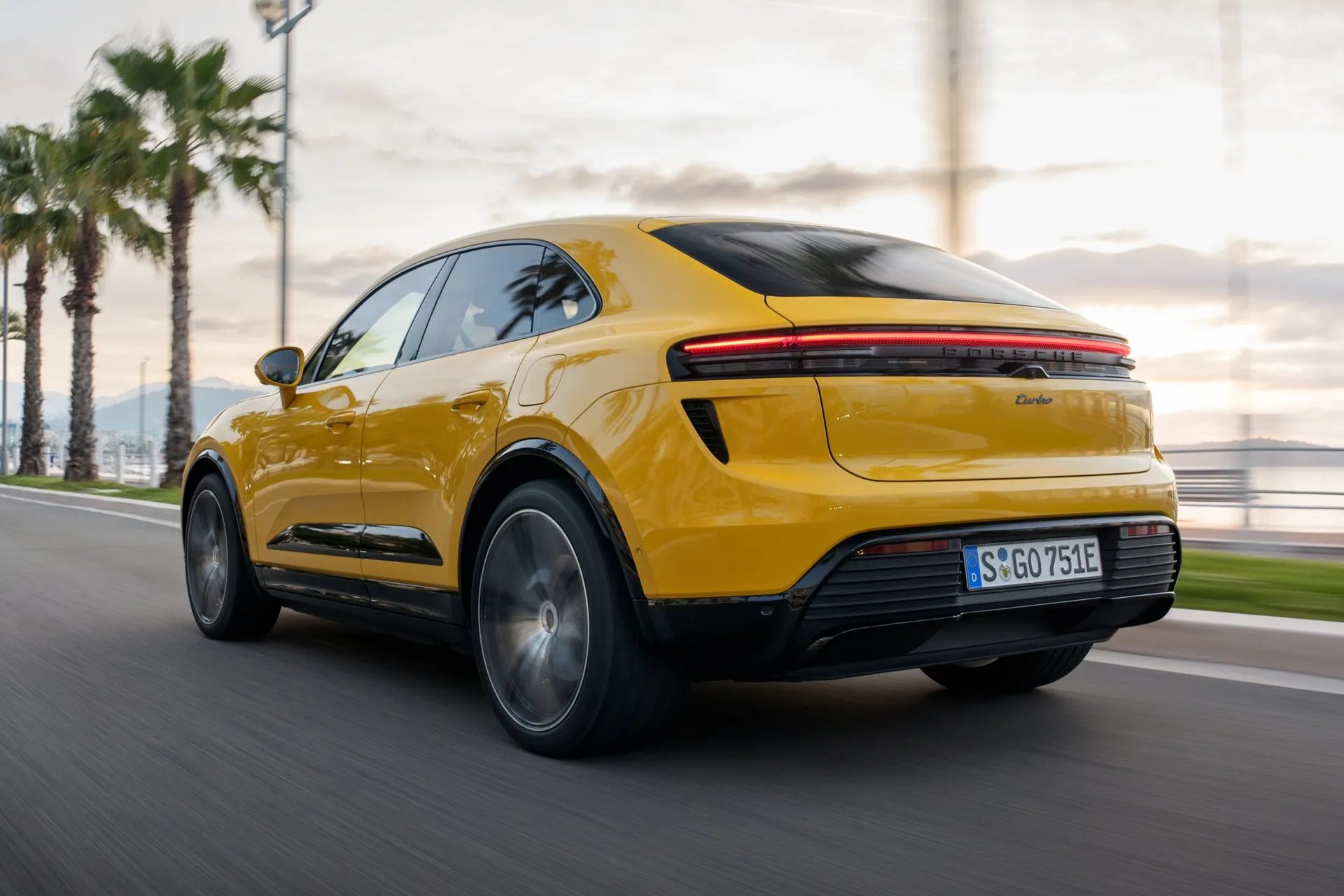
The Porsche Macan Electric has an 800-volt electrical system that allows it to charge at up to 270kW. If that’s just a number to you, we can tell you it’s properly quick. Even though the 100kWh (95kWh usable capacity) battery is enormous, because it charges so fast, you can get a 10-80% boost in as little as 21 minutes. That’s quite a bit quicker than the Mercedes-Benz EQE SUV and BMW iX3, and even has the edge on the fast-charging Kia EV6. The only trouble is finding a public charger capable of charging that quickly – they’re getting more common, but Tesla’s fast-charging network is still more comprehensive.
The other issue is cost. With many public fast chargers costing around 80p/kW, charging the Macan’s battery from empty to full away from home could cost around £75. If you charge at home using a wall-mounted charger it’ll cost you a lot less, especially if your energy tariff has cheaper off-peak rates. Even with a normal tariff off 24p/kW, a 0-100% charge at home would cost around £20. It would take around 12 hours to complete, though.
The Macan is pretty efficient in the way it consumes electricity. The most efficient version is the entry-level Macan, which officially manages up to 3.7 miles/kWh. The Turbo does 3.3 miles/kWh according to WLTP figures. During our test drive theTurbo was doing very nearly that without us driving particularly carefully, which is a good sign.
Porsche Macan Electric reliability and warranty
Even though the Porsche Macan has been around for a while now, the Porsche Macan Electric is too new for us to be able to qualify how reliable it is. However, Porsche's always enjoyed a good reputation among sports car makers for reliability. What we can tell you is how it rates as a brand: Porsche was ranked 4th in HonestJohn.co.uk's Satisfaction Index, with a Satisfaction Index Score of 90.91%. That was one place below Telsa but much higher than other key rivals, such as Audi, BMW and Mercedes.
Porsche Macan Electric insurance groups and costs
The Porsche Macan Electric is at the upper end of the insurance groups. That’s because it’s a fast, expensive electric car, so don’t expect a cheap quote. The entry-level Macan is in insurance group 45, and the group creeps up as you climb the range and power outputs. It culminates in the Turbo sitting in insurance group 50 – the top band.
VED car tax: What is the annual road tax on a Porsche Macan Electric?
Because the Macan Electric is, well, all-electric, there’s currently no VED (road tax) to pay. That situation is likely to change in the future, though, so make use of the tax break while you can. It’s also worth mentioning that, being a zero-emission car, the Macan Electric will be a cheap company car, thanks to very favourable benefit-in-kind (BIK) for company car users.
Porsche Macan Electric price
"The Macan Electric is expensive to buy next to many of its rivals and the option’s list is as long as Mr. Tickle’s arm. That said, the Macan 4 is probably the best all-rounder in the range and comes with most things you need – just make sure you add air suspension to get the best ride."
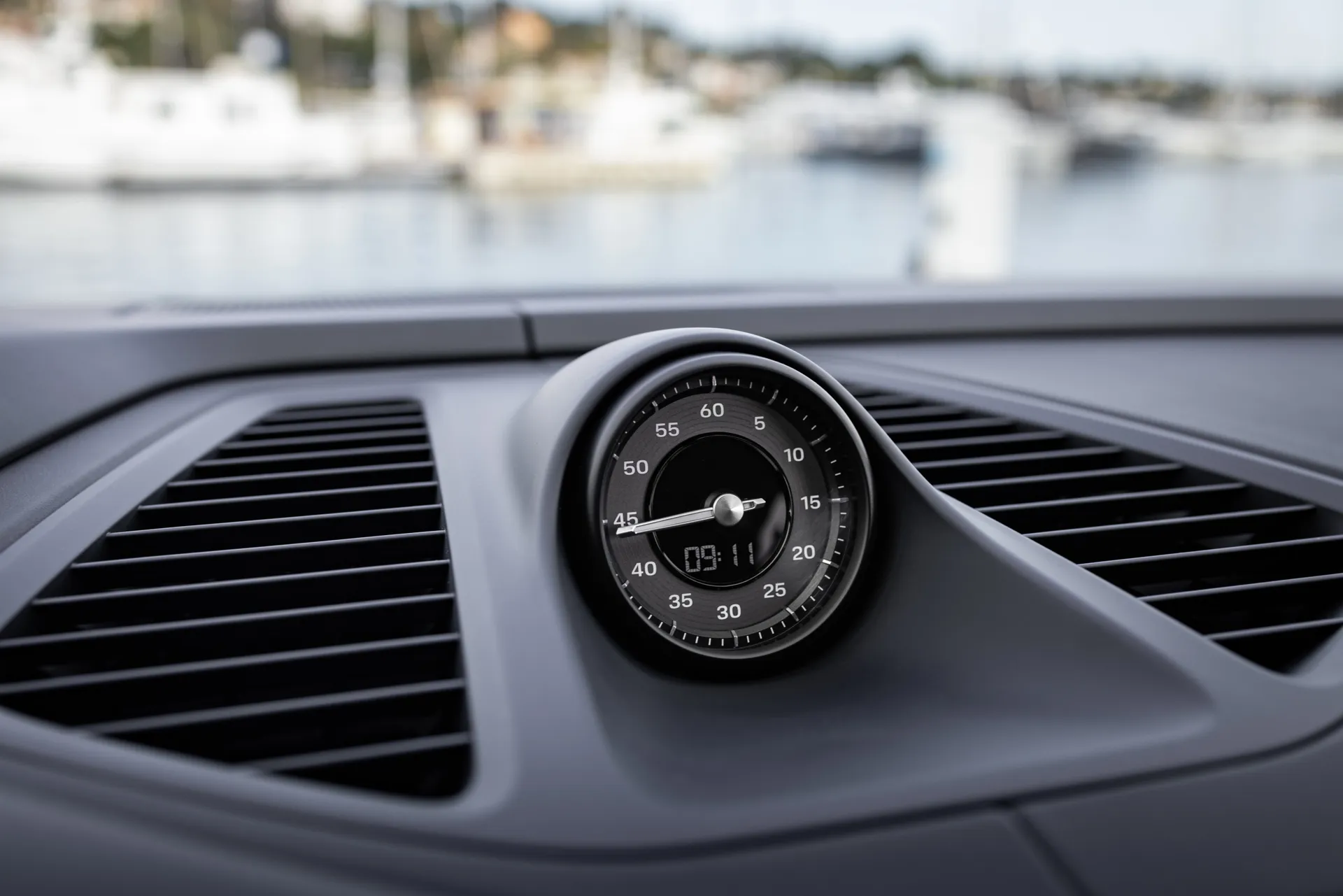
The Macan Electric isn’t cheap. The new price starts at just under £70,000 for the rear-wheel-drive model and rises to not far off £100,000 for the top-tier Turbo. For reference, the mechanically similar Audi Q6 e-tron starts at just under £60,000.
At the moment there aren’t any Porsche Macan Electrics on the used market, although there are plenty of used petrol-powered Porsche Macans. You can pick up three-year-old examples of those, with under 30,000 miles on the clock, from around £45,000. And, as we’ve mentioned, you can still buy a new petrol-powered Porsche Macan. A new one of those is a lot cheaper than the EV version – a new petrol Macan ranges from approximately £55,000 up to £75,000.
Trim levels and standard equipment
The Macan range comes with 20-inch alloy wheels, eight-way electrically adjustable and heated front seats, LED headlights, power-folding door mirrors, auto-dimming mirrors, ambient interior lighting, dual-zone climate control, 10.9-inch infotainment touch screen, Apple CarPlay/ Android Auto, wireless phone charger, and a heat pump. We’d definitely recommend adding air suspension. It’s not a cheap option but really improves the ride quality over the standard passive suspension or the other, cheaper suspension option, which is PASM adaptive damping.
The Turbo has quite a few extras to help justify its higher price. Mechanically, these include standard air suspension, along with torque vectoring and an electronic limited-slip rear differential. Other standard additions include Matrix LED headlights, 18-way electrically adjustable front seats, electrically adjustable steering column, BOSE stereo, powered tailgate, Sports Chrono Package, red brake calipers, Porsche Electric Sport Sound, carbon trim inlays, and faux-suede headlining.
Ask the heycar experts: common questions
Does the Porsche Macan Electric handle as well as a Taycan?
How far can a Porsche Macan Electric go before you have to recharge?
Do I need to spend lots on options if I buy a Porsche Macan Electric?
Get our latest advice, news and offers
Keep me updated by email with the latest advice, news and offers from heycar.
By submitting you agree to our privacy policy
